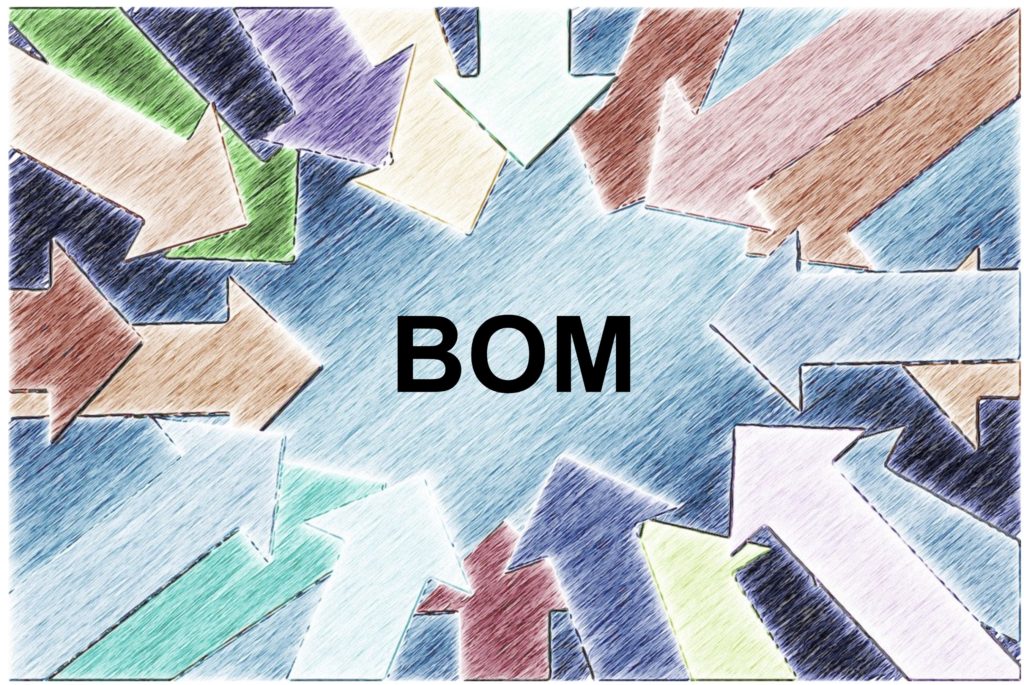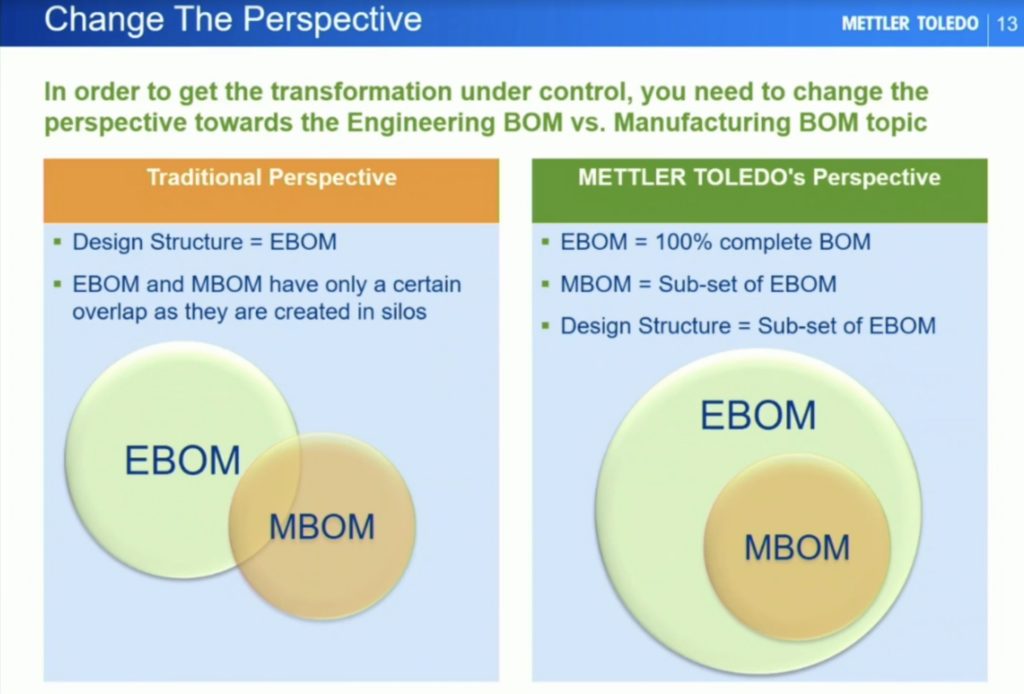
Earlier this week, I attended a PLM Spotlight session organized by PI DX. If you missed my earlier blog, please check it out here – What’s new in PLM integrations? My favorite session was about Making PLM-ERP integrations easy? presented by Hilmar Brunn of METTLER TOLEDO – a global manufacturer of precision instruments. I loved the presentation because I think it hit the nail on the biggest problem in PLM integrations – BOM management. Or, in other words, how to handle BOM transformation, which is essentially the most critical element of PLM-ERP integrations.
In nutshell, the idea of METTLER is to provide an engineering BOM, which is encapsulating a master BOM for everything including MBOM. The latter is production site-specific and can be different for each production site. Here is the core idea of the following image.

As much as I like the picture above, I have to say that I hate the next picture, which presents the number of transformations between multiple CAD systems, design structure, and part structure (EBOM), following even more transformations between EBOM and ERP systems holding MBOM.

The presentation took me back to the ideas of Single BOM. In a nutshell, engineering BOM in the case of METTLER TOLEDO is playing the role of the single BOM. Check some of my earlier articles – How to develop a single BOM strategy and The ugly truth about multi-BOM management.
I went back to my previous slides and presentations and combined them together with the several years of developing openbom.com, which took many of the ideas of single BOM management combined with a lot of customer experience of seamless BOM generations from multiple data storages and systems as well as connecting multiple data sources. I believe a single BOM journey is still a big deal for many companies.
In my view, METTLER TOLEDO is a great example of a very successful PLM integration journey, yet based on the presentation it still suffers from the complexity of BOM integrations, transferring BOMs between different structures and system silos. Teamcenter is formally appointed to be the source of master BOM. Two processes need to be developed to maintain it- the upstream process taking data from CAD systems and transforming it into a design structure. The second one is the consumption process, taking BOM from TC downstream to SAP, but preventing it from changing there.
The harsh reality of BOM Integration is maneuvering with BOM structures and ensuring the structures are identical and correctly duplicated (aka synched) between multiple silos.
Is there a way to simplify BOM integration?
I would like to get back to my BOM maturity model, which includes 3 phases – (1) Share, (2) Reference, (3) Query. What does it mean and how can such a model work? The core element of the approach is a flexible data model capable of holding a superset master BOM. The important element of this model is to have the capability to define all elements of the BOM as well as to hold parameters to “resolve” the model for multiple user-defined views. Flexibility is a key. Duplication is a killer. The second element (reference) is a variable that is capable of creating a permutation of the BOM related to item references. The same BOM can be visualized in the context of engineering items as well as manufacturing items. Other options are available too. Such references will allow us to contextualize the BOM for different systems. The last third (but also very important) is a query model that will allow BOM to be pulled with different contexts and filtered with different disciplines.
What PLM is capable of doing so? I’d be very much interested to learn more about METTLER TOLEDO implementation and the challenges they had to overcome making integrations using Teamcenter. The topic is important, so if you want to discuss please reach out.
What is my conclusion?
BOM is a key element in most PLM integrations. Therefore BOM integration is a place where many PLM implementation can live and die at the same time. The key element is to provide a master BOM model to coordinate an entire activity of the company from early design to later manufacturing, service, and support stages. While it was a PLM goal for many decades, not many companies have actually achieved the goal. But the story of a single company is actually only a beginning. In the next article, I will talk about how to integrate BOMs between multiple companies. This is a much bigger deal. Just my thoughts…
Best, Oleg
Disclaimer: I’m co-founder and CEO of OpenBOM developing a digital network-based platform that manages product data and connects manufacturers and their supply chain networks. My opinion can be unintentionally biased.
The post How To Make BOM Integrations Easy? appeared first on Beyond PLM (Product Lifecycle Management) Blog.



Be the first to post a comment.